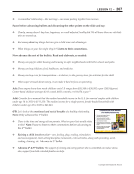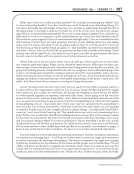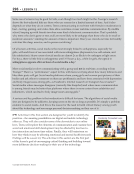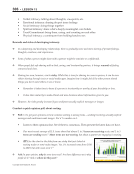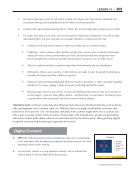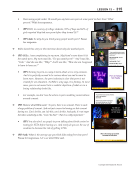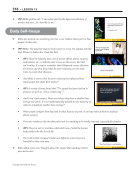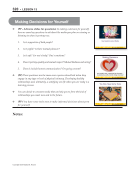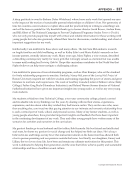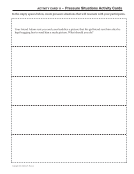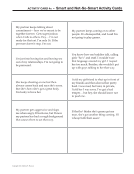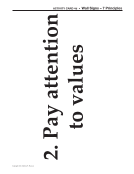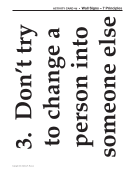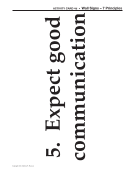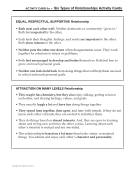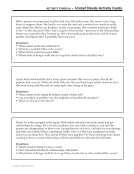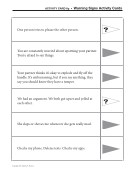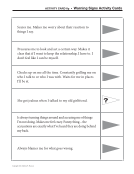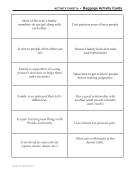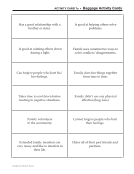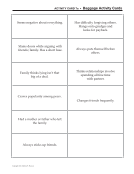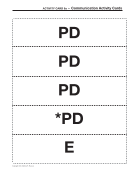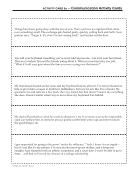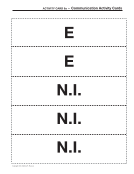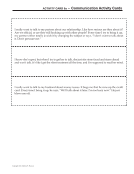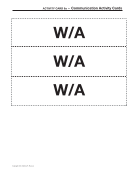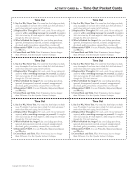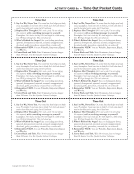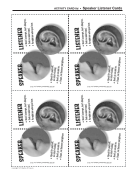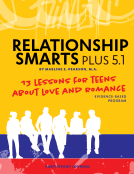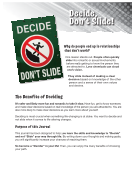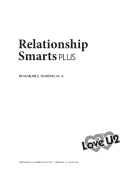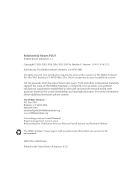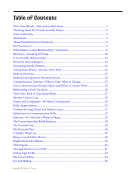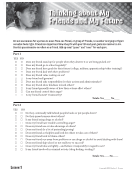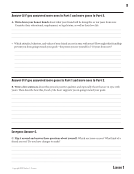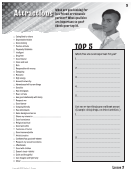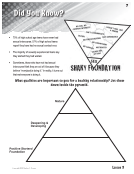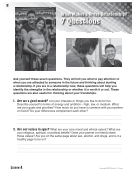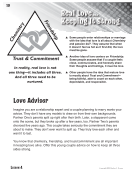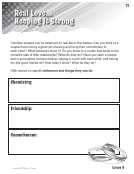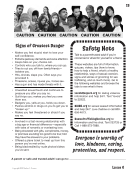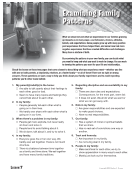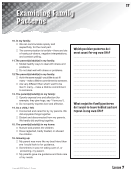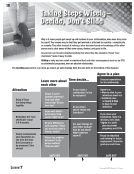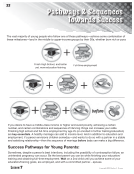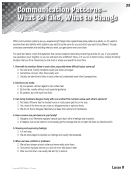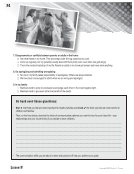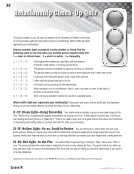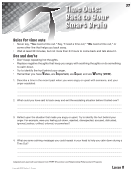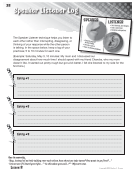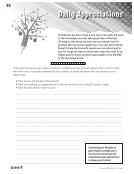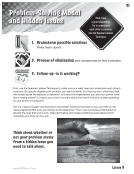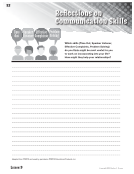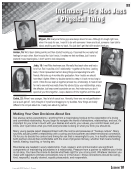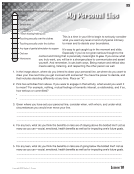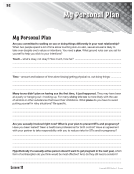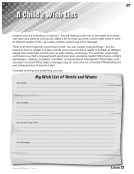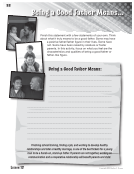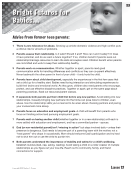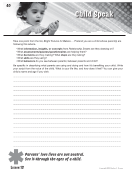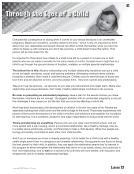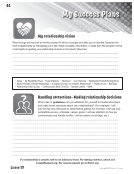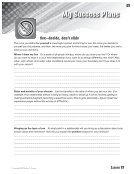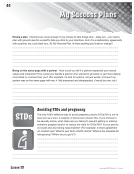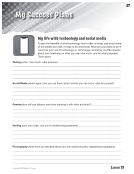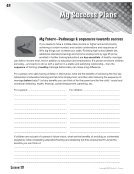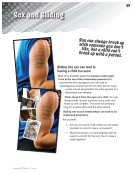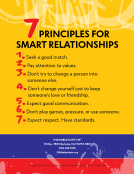Copyright 2025 Marline E. Pearson
104 • LESSON 6
*Note: Michael Johnson, a leading researcher in the field, and others use the term “intimate
terrorism”. This type of violence is also referred to as coercive control violence.
❖ (PP) Unhealthy patterns in relationships can start early. Some people may think
that verbal abuse is normal—it may be what they have seen around them.
❖ It is really important to recognize the early warnings in dating and get out
because the deeper one gets into an abusive relationship, the harder
and more dangerous it can be to get out. (Read the list on the left.)
❖ Remember, when those love chemicals are surging, it makes it harder to see those
early warning signs. Because of this, people may often rationalize away or minimize those red flag behaviors. For
example, “My partner just loves me. That’s why they’re jealous and don’t want me going out with friends.”
Review early signs on the left and then read the list on the right of the slide on the signs of
greatest danger.
❖ Once a victim is attached, an abuser can do anything to keep their partner from leaving— even killing or
threatening to kill themselves.
Instructor Note: There is a powerful TED talk by Leslie Morgan Steiner, author of Crazy Love. It’s
a poignant story of how a highly educated and accomplished professional woman got gradually
sucked into a violent relationship that put her life in danger. She tells how it happened and how she
got out. It may serve as useful background information to help you prepare to deliver the lesson and
especially for fielding questions about why victims stay.
❖ You are all at the beginning of a lifetime of romantic relationships.
❖ An important reason to steer clear of or exit an abusive relationship now, when you are young, is so that it
doesn’t become a pattern.
❖ Children who grow up in abusive homes can be harmed in subtle and not-so-subtle ways.
❖ Children who experience domestic violence are more likely to experience a wide range of problems.10
Early Warnings &Signs of Greatest Danger
Harm to Children
104 • LESSON 6
*Note: Michael Johnson, a leading researcher in the field, and others use the term “intimate
terrorism”. This type of violence is also referred to as coercive control violence.
❖ (PP) Unhealthy patterns in relationships can start early. Some people may think
that verbal abuse is normal—it may be what they have seen around them.
❖ It is really important to recognize the early warnings in dating and get out
because the deeper one gets into an abusive relationship, the harder
and more dangerous it can be to get out. (Read the list on the left.)
❖ Remember, when those love chemicals are surging, it makes it harder to see those
early warning signs. Because of this, people may often rationalize away or minimize those red flag behaviors. For
example, “My partner just loves me. That’s why they’re jealous and don’t want me going out with friends.”
Review early signs on the left and then read the list on the right of the slide on the signs of
greatest danger.
❖ Once a victim is attached, an abuser can do anything to keep their partner from leaving— even killing or
threatening to kill themselves.
Instructor Note: There is a powerful TED talk by Leslie Morgan Steiner, author of Crazy Love. It’s
a poignant story of how a highly educated and accomplished professional woman got gradually
sucked into a violent relationship that put her life in danger. She tells how it happened and how she
got out. It may serve as useful background information to help you prepare to deliver the lesson and
especially for fielding questions about why victims stay.
❖ You are all at the beginning of a lifetime of romantic relationships.
❖ An important reason to steer clear of or exit an abusive relationship now, when you are young, is so that it
doesn’t become a pattern.
❖ Children who grow up in abusive homes can be harmed in subtle and not-so-subtle ways.
❖ Children who experience domestic violence are more likely to experience a wide range of problems.10
Early Warnings &Signs of Greatest Danger
Harm to Children
























































































































































































































































































